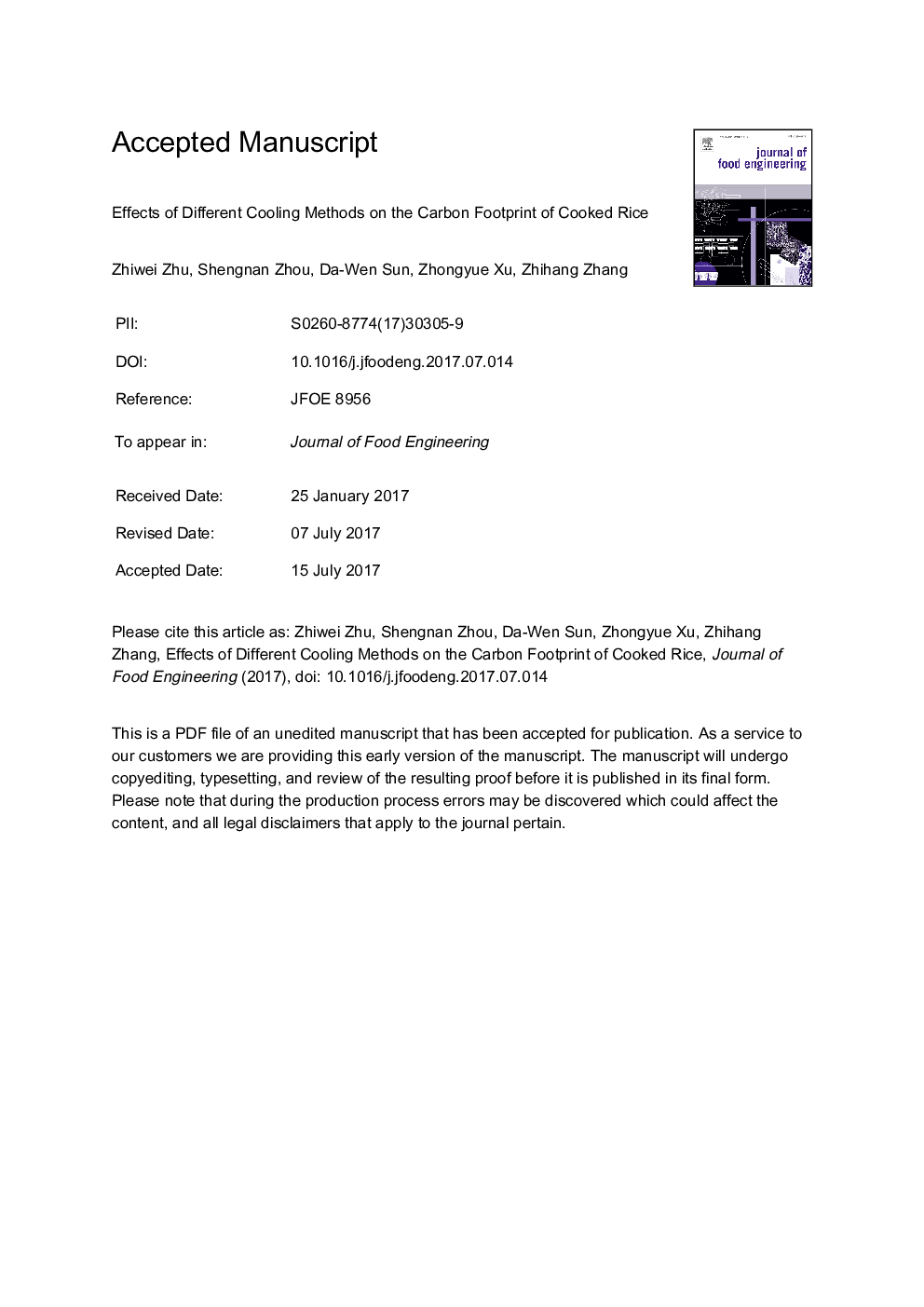| Article ID | Journal | Published Year | Pages | File Type |
|---|---|---|---|---|
| 4908892 | Journal of Food Engineering | 2017 | 25 Pages |
Abstract
Global warming has become a serious problem facing the international community. All countries strive to reduce greenhouse gas (GHG) emissions. The food system produces a large amount of GHGs, and thus study of the carbon footprint (CF) in the food industry has attracted the attention of researchers. Based on the lifecycle assessment (LCA) method, the present study calculated CFs of cooling of cooked rice, as a unit operation under different operational conditions. The results showed that the carbon footprints for cooling 200 g cooked rice were 54.36 ± 1.07 gCO2eq for refrigerator cooling at 0 °C, 66.05 ± 2.00 g CO2eq for refrigerator cooling at 8 °C, 741.55 ± 27.26 g CO2eq for vacuum cooling, 1914.10 ± 141.24 g CO2eq for air blast cooling at 0 °C, 2463.61 ± 221.21 g CO2eq for air blast cooling at 3 °C, and 3916.54 ± 202.28 g CO2eq for air blast cooling at 8 °C. In addition, the CF for the cooling process was positively correlated with the output power of equipment and the cooling time. The carbon emissions arising from electricity consumption contributed to most of the CF for the cooling process. Sensitivity analysis of the parameters for the CF for the cooling process revealed that the CF of cooling process was stable for the applied equipment emission factor, but sensitive to the efficiency of electricity use and the extent of load. Improving the efficiency of electricity use and increasing cooling load could reduce the final CF of a product.
Keywords
Related Topics
Physical Sciences and Engineering
Chemical Engineering
Chemical Engineering (General)
Authors
Shengnan Zhou, Zhiwei Zhu, Da-Wen Sun, Zhongyue Xu, Zhihang Zhang, Qi-Jun Wang,
